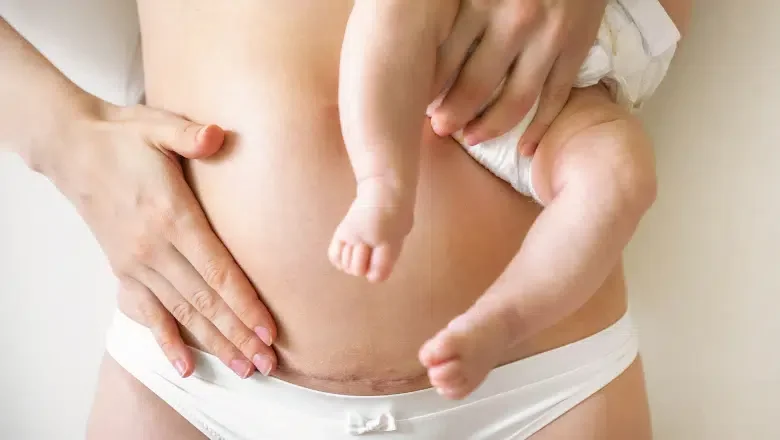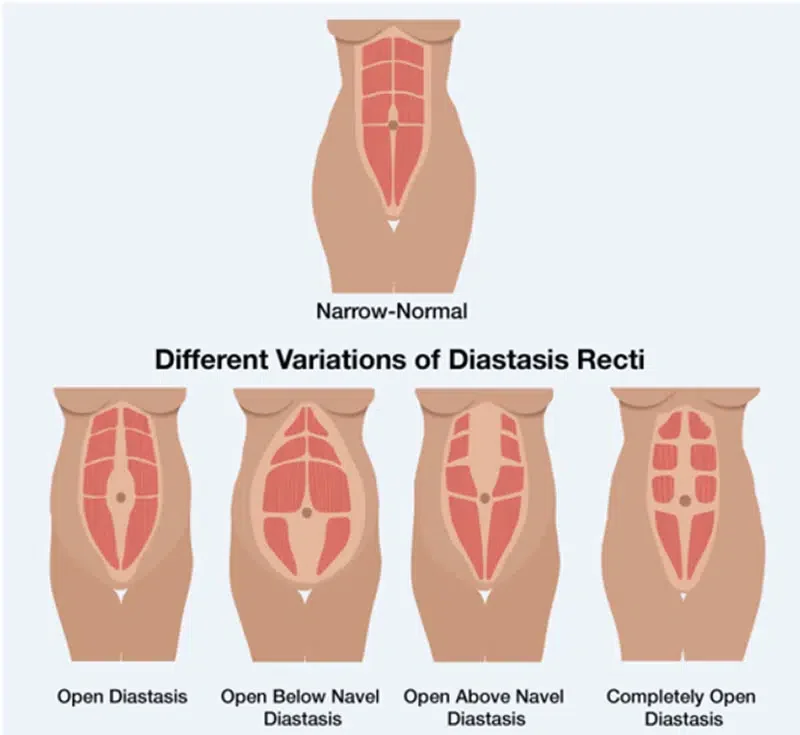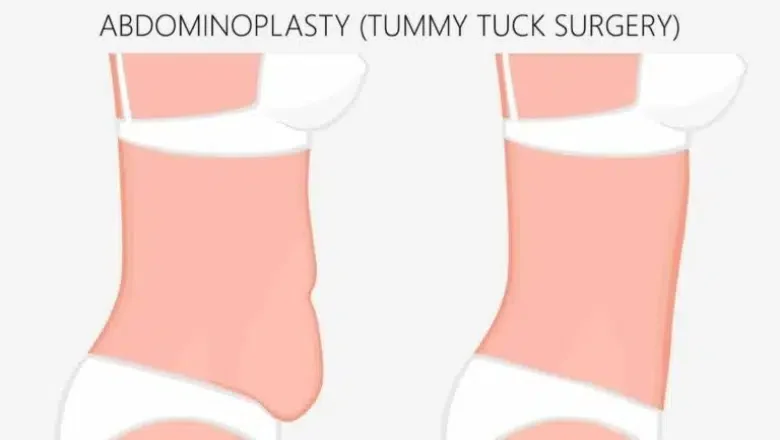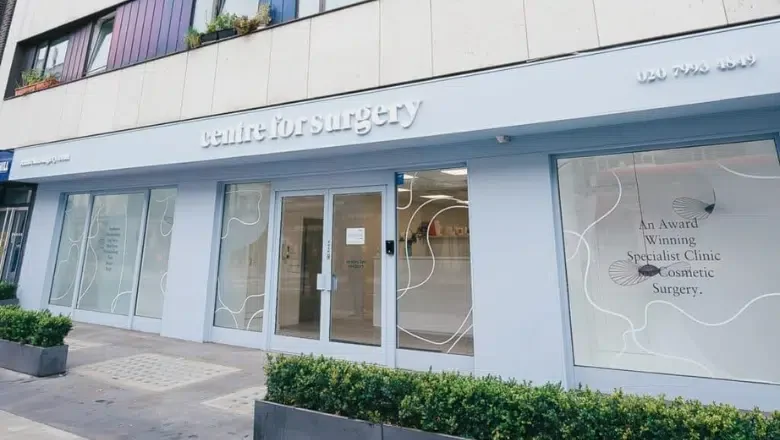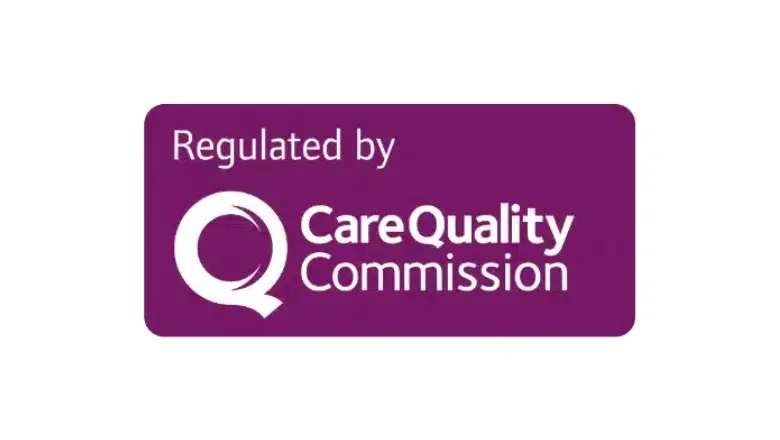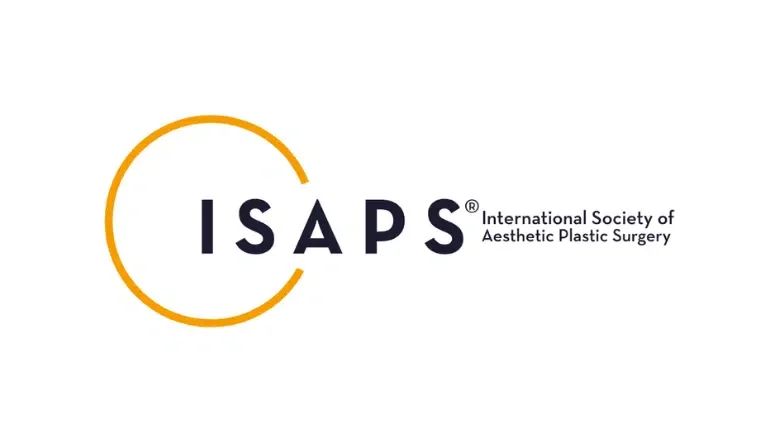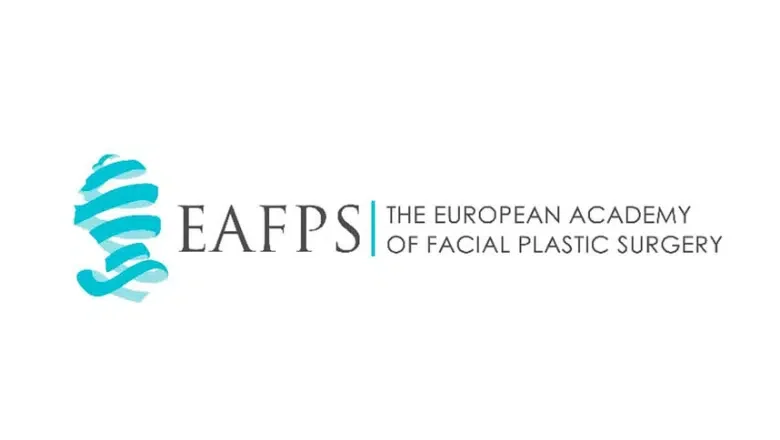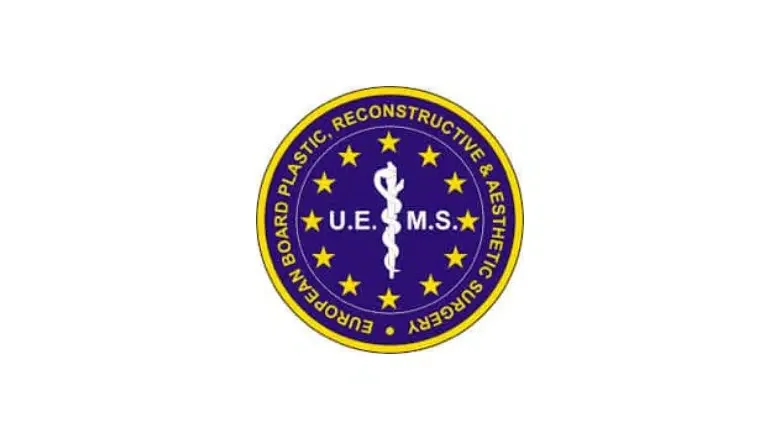How To Get Rid Of C-Section Pouch
Undeniably, the physical repercussions of a caesarean section, commonly known as a C-section, can be tremendously taxing on a woman’s body. These significant effects often extend beyond the tangible evidence of a C-section scar. One of the recurrent challenges mothers face is the emergence of a postnatal abdominal protrusion or what is also termed as a ‘c-section pouch’.
The term ‘C-section pouch’ describes the build-up of surplus skin and fatty tissue that aggregates in the abdominal area following a caesarean procedure. This physical manifestation is also known by several other names, such as ‘pannus stomach’, ‘mummy tummy’, or ‘apron belly’. This phenomenon is known to cause immense psychological stress and discomfort for a considerable number of women.
RELATED: Belly Overhang After C-Section
The ‘mummy tummy’ effect typically manifests when the abdominal muscles endure excessive stretching beyond their usual limits during childbirth. This overextension weakens these muscles, thereby reducing their ability to uphold the body’s structure efficiently. Consequently, a sagging layer of lax tissue, along with obstinate excess, gathers in the lower abdominal region, forming a distinct pouch.
This piece delves into the root causes, potential symptoms, and range of treatment solutions, including abdominoplasty, more widely known as ‘tummy tuck’ surgery. Undertaking a tummy tuck following a caesarean section often represents the most comprehensive method for addressing this particular issue, as practised at the Centre for Surgery.
Centre for Surgery, renowned as London’s leading specialist plastic surgery clinic, provides a professional and reliable sanctuary for women dealing with such issues. With an esteemed team of some of the foremost plastic surgeons in the United Kingdom, the Centre is fully equipped and committed to helping women regain their pre-pregnancy body confidence.
What is a C Section Pouch?
An abdominal delivery, more commonly recognised as a caesarean section or C-section, is a surgical intervention wherein the baby is birthed via an incision made in the mother’s abdomen. The execution of this procedure necessitates that your physician makes a cut through numerous layers of the body, encompassing nerve endings, muscular tissue, and flesh.
The repercussions of this process can involve the splitting and weakening of the abdominal muscles, which subsequently diminishes their ability to provide adequate support and keep the body structure well-organised and intact.
This decline in muscular strength may precipitate adipose tissue accumulation around the midriff, leading to an extended and bulging abdomen. This phenomenon is frequently referred to as a C-section shelf or a C-section tummy. This ‘shelf’ denotes an area of scar tissue that triggers the development of an abdominal protrusion composed of drooping skin, surplus fat, and the aforementioned scar tissue.
RELATED: Tummy Tuck after C-Section for a Flat and Toned Stomach
The occurrence of a C-section tummy is especially prevalent among women who have undergone one or more caesarean sections. These physical alterations, although common, can be emotionally taxing and may impact a woman’s self-perception and body confidence significantly.
Causes of C Section Pouch
The emergence of an apron belly or a C-section pouch is commonly linked to a variety of factors, such as weight gain during the gestation period, hormonal fluctuations, and genetic predispositions. Below are some of the primary causes of a hanging belly post-pregnancy:
Pregnancy
Unquestionably, the most recurrent cause of a mum pouch following a C-section stems from the escalated intra-abdominal pressure due to the baby exerting a downward force on the abdomen during delivery. This increased pressure has the potential to stretch the abdominal muscles beyond their typical limits, culminating in a noticeable stomach protrusion or bulge.
Weight Gain
Excessive weight gain during pregnancy can further contribute to the development of a C-section pouch. As the foetus grows within, the additional weight exerted on your abdominal muscles may lead them to stretch excessively and weaken. This can cause an accumulation of fat and adipose tissue, specifically in the lower abdominal region, thereby forming a distinguishable bulge or pouch.
Genetics
Genetics also play a crucial part in the formation of an apron belly. Some women are genetically predisposed to weaker abdominal muscles or may lack adequate connective tissue, which can significantly affect the elasticity and integrity of the abdominal wall.
Hormonal Changes
Additionally, some women undergo hormonal shifts during pregnancy. These changes can trigger their bodies to store an unusually high amount of adipose tissue. Oestrogen, a hormone that is significantly released during pregnancy, can weaken the connective tissues, thereby making it challenging for these tissues to maintain the unity of the abdominal muscles.
These aforementioned factors collectively contribute to the development of a hanging belly post-pregnancy. Their effects can be exacerbated by subsequent pregnancies or further weight gain, thereby reinforcing the importance of appropriate physical care and conditioning during and post the gestation period.
Symptoms of C-section Pouch
Some typical signs and symptoms of a C-section pouch may include:
Visible Bulge
The most apparent sign of a C-section pouch is the presence of a noticeable bulge or protrusion in the lower abdominal region, typically right above the surgical scar. This may become more prominent when you are standing or sitting.
Physical Discomfort
Some women may experience discomfort due to excess skin and tissue. This could be because of the pouch’s weight or because it rubs against clothing. It may also interfere with certain activities, like exercising.
Changes in Clothing Fit
The C-section pouch can affect the way your clothing fits, especially around the waist. It may be challenging to wear certain types of clothing, such as fitted dresses or jeans, comfortably.
Emotional Distress
Beyond the physical symptoms, the presence of a C-section pouch can lead to feelings of embarrassment or self-consciousness. Some women may struggle with body image issues as a result of the changes to their postpartum bodies.
Skin Conditions
In some cases, the excess skin and tissue can lead to skin conditions, such as irritation, rashes or infections, especially if the area is not cleaned correctly or aired regularly.
C-Section Pouch vs Diastasis Recti
The C-section pouch and diastasis recti are two separate conditions often associated with pregnancy and childbirth, particularly in cases where a caesarean section has been performed. However, they have distinct characteristics and result from different physiological changes.
A C-section pouch, also known as an apron belly or mummy tummy, is a collection of excess skin and fat that develops above the surgical scar after caesarean delivery. It’s primarily caused by the stretching and subsequent weakening of the abdominal muscles due to the surgical procedure and the pregnancy itself. The excess skin and fat accumulate in this area, creating a noticeable bulge or ‘pouch’. This is a common postpartum change, but its prominence varies between individuals based on factors such as genetics, body type, and the number of pregnancies.
On the other hand, diastasis recti is a condition wherein the large abdominal muscles (rectus abdominis) separate. This happens when the growing uterus pushes against the abdominal wall during pregnancy, causing the muscles to stretch and sometimes separate along the midline connective tissue (linea alba). The separation can create a ridge or bulge in the middle of the abdomen, especially noticeable when the abdominal muscles are strained. It’s possible to have diastasis recti without a noticeable bulge if the connective tissue remains strong enough. Some level of separation is typical during pregnancy, but if it doesn’t naturally resolve postpartum, it can lead to issues such as lower back pain and core weakness.
RELATED: What is the difference between a tummy tuck and a C-section?
How to prevent a C-Section Pouch
While it’s not always possible to entirely prevent the development of a C-section pouch due to the various factors at play, including genetics and the physical changes experienced during pregnancy, certain steps can be taken to reduce the likelihood of its appearance or minimise its extent. Here are some preventative measures:
Maintain a Healthy Weight
Staying within the recommended weight gain range during pregnancy can help prevent the formation of excess skin and fat in the abdominal area.
Exercise Regularly
Engage in regular, doctor-approved exercises before, during and after pregnancy to keep your abdominal muscles strong. Prenatal exercises can include swimming, walking, and prenatal yoga. Postnatal exercises, such as pelvic floor exercises and specific abdominal exercises, can be helpful once your doctor has given you the all-clear.
Eat a Balanced Diet
Consuming a nutrient-rich diet before, during and after pregnancy can prevent excessive weight gain, which can contribute to a C-section pouch. Include plenty of fruits, vegetables, lean proteins, and healthy fats in your meals.
Hydrate
Staying well-hydrated can improve skin elasticity, which may aid in reducing the amount of excess skin after delivery.
Post-Pregnancy Support
A post-pregnancy support belt or wrap can provide extra support to the abdominal muscles and may help reduce the extent of a C-section pouch. However, their effectiveness varies from person to person, and they should be used under medical guidance.
Breastfeed if Possible
Breastfeeding has been associated with more rapid postpartum weight loss, which may help reduce a C-section pouch.
Follow Postoperative Care Instructions
Ensure you meticulously follow your doctor’s postoperative care instructions after your C-section to support healing and reduce the risk of complications.
Surgical Solutions for C-Section Pouch
If non-invasive methods fail to ameliorate the conditions of an apron belly, recourse to plastic surgery treatments may be advised. These can include liposuction to extract excess fat from the afflicted area or a tummy tuck to eliminate loose skin and reinforce underlying muscles.
Liposuction
Liposuction is a cosmetic surgical procedure focused on removing excess fat deposits from the abdominal region. This process can help lessen the visual impact of a C-section pouch. However, it’s important to note that liposuction alone may not rectify the root cause of the issue, particularly if it involves muscle separation or excess skin.
If the underlying abdominal muscles are severely separated, a more comprehensive procedure like a tummy tuck may be recommended.
Tummy Tuck
Abdominoplasty, colloquially known as a tummy tuck or mummy tummy surgery, encompasses the removal of excess skin and fat from the abdomen, along with the repair of any separated abdominal muscles. This approach is often considered the most effective treatment method for C-section pouch removal, as it simultaneously tightens loose skin and diminishes excess fat.
C Section Pouch FAQs
Why Do I have a C-section pouch?
The term “C-section pouch” or “C-section shelf” is often used to describe a pouch-like bulge or overhang that some people experience around their lower abdomen following a cesarean section (C-section) delivery. This bulge can be attributed to various factors:
Abdominal Muscle Separation
During a C-section, the abdominal muscles are usually cut through to access the uterus. This procedure, called a “bikini cut,” may weaken the muscles and lead to a condition known as diastasis recti, where the abdominal muscles separate or become stretched. Diastasis recti can contribute to the appearance of a bulge or pouch in the lower abdomen.
Excess Skin and Fat
Pregnancy can cause the skin and underlying tissues in the abdomen to stretch. After childbirth, the skin may not regain its previous elasticity, and there may be excess skin and fat that contribute to the appearance of a pouch.
Postpartum Changes
Following a C-section, the body undergoes various postpartum changes, including hormonal fluctuations and fluid retention. These changes can affect the distribution of fat and fluid in the body, potentially leading to the development of a pouch-like bulge.
How to Get Rid of Mummy Tummy?
Getting rid of a mummy tummy or a C-section pouch usually involves a combination of lifestyle changes and physical conditioning. A balanced diet and regular exercise can help reduce excess fat and strengthen your abdominal muscles. Once you’ve received the go-ahead from your doctor, incorporate a variety of strength training exercises targeting the core and cardio exercises into your routine.
If these non-invasive methods don’t yield satisfactory results, there are surgical procedures, such as liposuction or a tummy tuck (abdominoplasty), that can address the issue. It’s crucial to consult with a specialist surgeon at Centre for Surgery to discuss these options and choose the best approach based on your individual circumstances.
When to Start Exercising After a C-Section?
The appropriate time to start exercising after a C-section largely depends on the individual’s health and the progress of recovery. Typically, light activities like walking can be started fairly soon after the operation, but more strenuous exercises should be avoided until you have medical clearance.
Most doctors recommend waiting at least six weeks postpartum before beginning a more strenuous exercise routine. However, each individual’s recovery rate is different, and your healthcare provider should determine the exact timeline based on your personal health condition and healing progress.
How long after a C-section can I get a tummy tuck?
The ideal timing for a tummy tuck, also known as abdominoplasty, after a C-section can vary depending on individual circumstances. It is generally recommended to wait at least six months after a C-section before considering a tummy tuck. This waiting period allows your body to heal correctly and for the postpartum changes to stabilise.
Here are a few reasons why waiting is typically advised:
Complete Healing
It takes time for the incision from your C-section to heal fully. Waiting for several months allows the surgical site to heal, reduces the risk of complications, and ensures that your body is ready for another surgical procedure.
Postpartum Changes
Your body goes through various changes after childbirth, including the resolution of swelling, hormonal adjustments, and potential weight loss. Waiting allows these changes to stabilise, allowing for a more accurate assessment of a tummy tuck’s aesthetic goals and potential outcomes.
Breastfeeding Considerations
If you are breastfeeding, it is generally recommended to wait until you have finished breastfeeding before undergoing elective surgery like a tummy tuck. This waiting period helps ensure the safety of both you and your baby.
How can a tummy tuck enhance the appearance of my abdominal pouch?
Whilst a tummy tuck incision typically extends further than a C-section, many patients are content with this trade-off as the tummy tuck scar is positioned lower on the abdomen, conveniently concealed by undergarments or swimwear. The primary objective of a C-section is to facilitate the swift and safe delivery of your baby, whereas a tummy tuck is focused on achieving an aesthetically pleasing outcome. This is accomplished through meticulous pre-operative planning, ensuring optimal closure and placement of the incision, to minimise tension on the skin and promote favourable scar healing.
During a tummy tuck procedure, a lengthy incision is made just above the pubic area, spanning from one hip to the other, and a secondary incision is created around the umbilicus. Subsequently, your surgeon gains access to the underlying abdominal wall, extending up to the rib cage border. If necessary, the abdominal muscles can be tightened to address any laxity or separation that may have occurred, commonly referred to as diastasis recti. This condition arises when the abdominal muscles become thin and stretched, resulting in a midsection bulge. By tightening the abdominal muscles and removing restrictive scar tissue from a previous C-section, a tummy tuck can effectively address the presence of a C-section pouch.
In some cases, liposuction may be combined with a tummy tuck to eliminate stubborn fat deposits. Following this, the skin is repositioned to conform to the new contours of your abdomen, and any excess skin is excised. If required, the umbilicus can be repositioned or reshaped to achieve a natural-looking outcome.
Can a Mummy Makeover Address a C-Section Pouch?
Yes, a ‘mummy makeover’ can address a C-section pouch. A mummy makeover refers to a series of cosmetic surgeries that are performed together to address the changes in a woman’s body after pregnancy and childbirth.
This can include a tummy tuck (abdominoplasty) to remove excess skin and fat and tighten weakened abdominal muscles, as well as liposuction to remove stubborn fat deposits. The exact combination of procedures will depend on the individual’s specific needs and desired outcomes.
Looking to get rid of your c-section pouch?
If you’re considering a surgical solution to address your C-section pouch, choosing Centre for Surgery could be an excellent decision for several reasons:
Expert Team
Our medical team at Centre for Surgery is comprised of some of the most skilled and experienced plastic surgeons in the United Kingdom. They have a proven track record in performing abdominoplasties and liposuction procedures with high satisfaction rates.
Personalised Care
At Centre for Surgery, we understand that every patient’s body and goals are unique. We take a tailored approach to each case, working closely with you to understand your needs and create a personalised treatment plan to achieve the best possible outcomes.
Advanced Techniques
We utilise the latest surgical techniques and technology to ensure safe and effective treatment. Our team is adept at handling complex cases and working to minimise scarring and recovery time.
Comprehensive Aftercare
Postoperative care is a vital aspect of your recovery journey. At Centre for Surgery, we provide thorough aftercare instructions and follow-up appointments to ensure you’re healing well and to address any concerns you might have.
Comfort and Safety
Your comfort and safety are our top priorities. We maintain high standards of patient care within a safe, clean, and comfortable environment. Our surgical facilities are equipped with state-of-the-art technology to ensure the highest level of patient safety.
Transparency
We believe in clear and open communication. Our team will explain every aspect of the procedure to you, discussing potential risks and benefits so that you can make an informed decision about your treatment.
